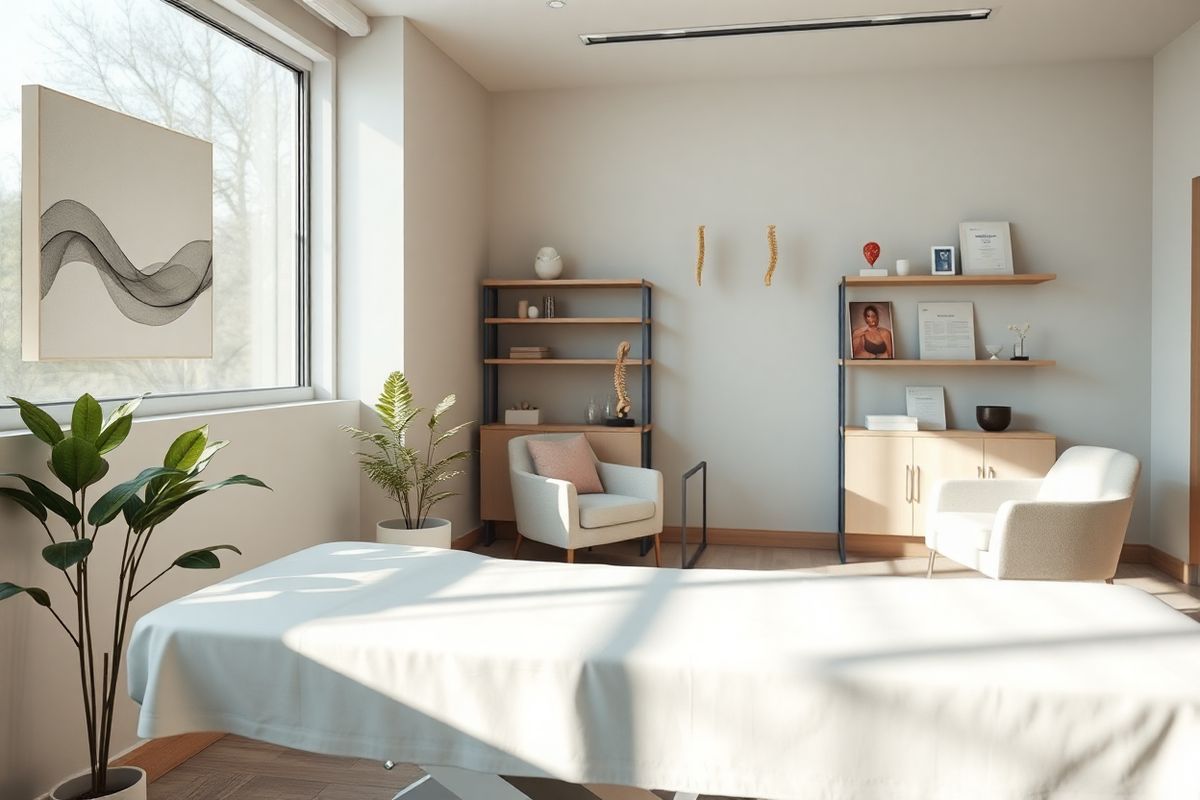Table of Contents
Overview of Degenerative Scoliosis: What You Need to Know

degenerative scoliosis is a condition characterized by an abnormal curvature of the spine that primarily develops in adults as a result of age-related changes in the spinal structure. Unlike idiopathic scoliosis, which often presents during childhood or adolescence without a known cause, degenerative scoliosis emerges from the wear and tear of spinal components due to factors such as osteoarthritis, disc degeneration, and osteoporosis. This condition can lead to significant discomfort, mobility issues, and overall decline in quality of life.
Research indicates that nearly 9% of adults aged 40 and older are affected by some degree of scoliosis, with degenerative changes being a significant contributing factor (Brown Health, 2023). The curvature may vary in severity, and while some individuals may experience minimal symptoms, others can suffer debilitating pain and functional impairment.
Recognizing the Symptoms of Degenerative Scoliosis: Signs to Watch For

The symptoms of degenerative scoliosis can vary widely among individuals. Commonly reported symptoms include:
-
Back Pain: Often the most prominent symptom, back pain can be persistent and may worsen with activity or prolonged sitting or standing. Pain management strategies typically focus on alleviating this discomfort (NHS, 2023).
-
Postural Changes: Individuals may notice changes in posture, such as leaning to one side, uneven shoulders, or a noticeable curve in the spine. These changes can lead to self-image concerns and emotional distress.
-
Nerve Pain: Compression of spinal nerves can lead to radicular pain, which may manifest as tingling, numbness, or weakness in the legs. This is often described by patients as a sensation radiating down the legs (Brown Health, 2023).
-
Fatigue: Due to chronic pain and discomfort, many individuals report increased fatigue, particularly after physical activity.
-
Difficulty Maintaining Upright Posture: As the condition progresses, individuals may find it harder to maintain an upright posture, especially after prolonged periods of activity (Brown Health, 2023).
Recognizing these symptoms early can lead to timely intervention and management strategies tailored to the individual’s needs.
Exploring the Causes of Degenerative Scoliosis: Understanding the Underlying Factors

Degenerative scoliosis arises from various factors that contribute to the deterioration of spinal structures. The primary causes include:
-
Age-Related Changes: As individuals age, the intervertebral discs lose hydration and elasticity, leading to disc degeneration. This can create an imbalance in the spinal column, contributing to curvature (NHS, 2023).
-
Osteoporosis: This condition leads to weakened bones, making them more susceptible to fractures and deformities. Osteoporosis can exacerbate the curvature of the spine and contribute to degenerative scoliosis.
-
Arthritis: Osteoarthritis, particularly in the facet joints of the spine, can lead to joint degeneration and increased curvature. The inflammation and pain associated with arthritis can further limit mobility and exacerbate symptoms (NHS, 2023).
-
Previous Spinal Injuries: Past injuries to the spine or surgeries can alter spinal alignment and increase the risk of developing degenerative scoliosis.
-
Genetic Predisposition: There may be a hereditary component to degenerative scoliosis, as family history of spinal disorders can increase the likelihood of developing similar conditions.
Understanding these underlying factors is vital for both prevention and treatment of degenerative scoliosis, allowing healthcare providers to offer personalized care.
Diagnosis of Degenerative Scoliosis: How Medical Professionals Assess the Condition
Diagnosing degenerative scoliosis typically involves a comprehensive evaluation process, which includes:
-
Medical History: Gathering information about the patient’s symptoms, family history, and any previous spinal conditions or surgeries.
-
Physical Examination: A healthcare professional will conduct a thorough physical exam to assess spinal alignment, range of motion, and any areas of tenderness (NIAMS, 2023).
-
Imaging Tests: The most common diagnostic tool is an X-ray, which allows for visualization of the spine’s curvature and helps in measuring the degree of scoliosis. MRI or CT scans may also be employed to evaluate the condition of the spinal disc and surrounding tissues.
-
Functional Assessments: Evaluation of the impact of scoliosis on daily activities and mobility. This may involve specific tests to assess strength, flexibility, and overall function.
Comprehensive Treatment Options for Scoliosis: From Non-Surgical Approaches to Spinal Surgery
The treatment for degenerative scoliosis is multifaceted and depends on the severity of the curvature, the presence of symptoms, and the overall health of the patient. Treatment options include:
Non-Surgical Approaches
-
Pain Management: Over-the-counter nonsteroidal anti-inflammatory drugs (NSAIDs) such as ibuprofen are often recommended for pain relief (NHS, 2023). In cases of severe pain, stronger prescription medications may be necessary.
-
Physical Therapy: Tailored exercise programs can help strengthen core muscles, improve flexibility, and enhance posture. Physical therapists may incorporate aquatic therapy for additional support (Brown Health, 2023).
-
Lifestyle Modifications: Maintaining a healthy weight and practicing good posture can alleviate some strain on the spine. Patients are encouraged to engage in low-impact exercises to promote overall spinal health.
-
Spinal Injections: In some cases, steroid injections may be administered to reduce inflammation and alleviate nerve pain, typically providing temporary relief (NHS, 2023).
-
Back Braces: While less common in adults, braces may be used to provide support and alleviate pain, particularly if surgery is not an option (Brown Health, 2023).
Surgical Options
When conservative treatments fail to provide relief or if the curvature is severe, surgical options may be considered:
-
Lumbar Decompression Surgery: This procedure aims to relieve pressure on nerves by removing bone or tissue causing the compression. It is often indicated for patients experiencing significant nerve pain (NHS, 2023).
-
Spinal Fusion: This procedure involves fusing two or more vertebrae to stabilize the spine and correct curvature. It is performed using bone grafts and hardware (screws and rods) to ensure proper alignment during the healing process (Cleveland Clinic, 2023).
-
Minimally Invasive Techniques: Newer surgical approaches aim to reduce recovery time and complications by using smaller incisions and advanced technologies (Cleveland Clinic, 2023).
Understanding the range of treatment options available is critical for patients and healthcare providers to make informed decisions about managing degenerative scoliosis effectively.
Making Informed Decisions About Spinal Surgery: What Patients Should Consider
Deciding whether to undergo spinal surgery is a significant decision that should be made with careful consideration. Patients should engage in discussions with their healthcare providers regarding:
-
Expected Outcomes: Understanding the potential benefits and risks associated with surgery, as well as the likelihood of achieving pain relief or improved function.
-
Recovery Process: Surgery often involves a lengthy recovery period, during which patients may need assistance with daily activities. Understanding what to expect can help patients prepare for post-operative care and rehabilitation (Cleveland Clinic, 2023).
-
Alternative Treatments: Exploring non-surgical options and understanding why they may or may not be appropriate before opting for surgery is essential.
-
Surgeon’s Experience: Patients should feel comfortable discussing their surgeon’s experience with spinal surgeries, including success rates and complication rates.
-
Personal Health Factors: Individual health conditions, lifestyle factors, and the specific nature of the scoliosis should be integral considerations in the decision-making process.
FAQ
What is degenerative scoliosis?
Degenerative scoliosis is a condition where the spine curves abnormally due to age-related degeneration of spinal structures, often resulting in pain and mobility issues.
How is degenerative scoliosis diagnosed?
Diagnosis typically involves a medical history review, physical examination, and imaging tests such as X-rays or MRIs to assess the degree of curvature and condition of the spine.
What are the treatment options for degenerative scoliosis?
Treatment options range from non-surgical approaches like physical therapy and pain management to surgical interventions such as spinal fusion or decompression surgery.
Is surgery always necessary for degenerative scoliosis?
Not necessarily. Many patients manage their symptoms effectively with non-surgical treatments. Surgery is usually considered when conservative measures fail or if the curvature is severe.
How long is the recovery after spinal surgery for degenerative scoliosis?
Recovery can vary based on the type of surgery performed but often involves several weeks to months of rehabilitation and gradual return to normal activities.
References
- Brown Health. (2023). Adult scoliosis: Treatment and Success Stories. Retrieved from https://www.brownhealth.org/be-well/adult-scoliosis-treatment-and-success-stories
- NHS. (2023). Scoliosis - Treatment in adults. Retrieved from https://www.nhs.uk/conditions/scoliosis/treatment-in-adults/
- Cleveland Clinic. (2023). Spinal Fusion: What It Is, Purpose, Procedure, Risks & Recovery. Retrieved from https://my.clevelandclinic.org/health/treatments/25168-spinal-fusion
- NIAMS. (2023). Scoliosis in Children and Teens: Diagnosis, Treatment, and Steps to Take. Retrieved from https://www.niams.nih.gov/health-topics/scoliosis/diagnosis-treatment-and-steps-to-take
- MedlinePlus. (2024). Questions to ask your surgeon about spinal surgery: MedlinePlus Medical Encyclopedia. Retrieved from https://medlineplus.gov/ency/patientinstructions/000971.htm
- NHS. (2023). Lumbar decompression surgery. Retrieved from https://www.nhs.uk/conditions/lumbar-decompression-surgery/
- UMMS. (2024). Complications of Spine Surgery. Retrieved from https://www.umms.org/ummc/health-services/orthopedics/services/spine/patient-guides/complications-spine-surgery
- NIH. (2024). Anesthesia-induced Developmental Neurotoxicity in Pediatric Population. Retrieved from https://doi.org/10.26502/jsr.10020400











